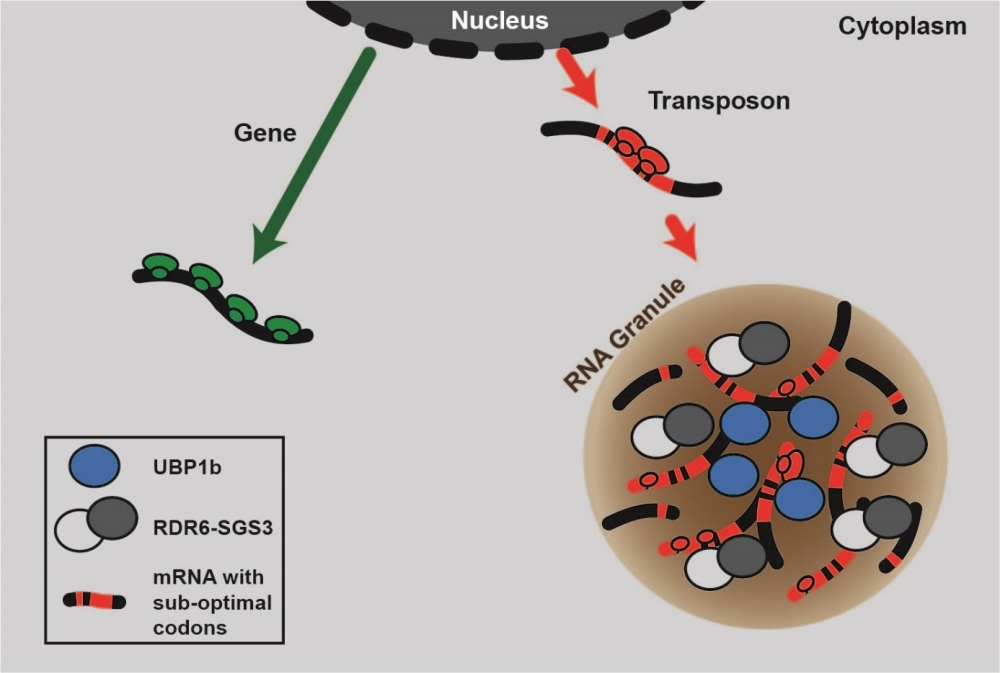Spotting the Alien Genes
Transposons (TEs) are mobile and alien DNAs frequently causing fatal gene mutations. In order to repress their activity, the host genomes have evolved mechanisms to achieve persistent and specific silencing. RNA-dependent RNA Polymerase 6 (RDR6) is the primary detector of these mobile elements that directly processes them to siRNAs, which triggers both de novo DNA methylation and RNAi (a process called RDR6-RdDM). RDR6-RdDM is essential for active transposon silencing, but how RDR6 specifically recognizes transposon RNAs is unknown. On March 1st, 2021, Nature Plants published a paper from the group of Dr. Jungnam Cho entitled "Ribosome stalling and SGS3 phase separation prime the epigenetic silencing of transposons". Their work revealed that the suboptimal codon usage of plant transposon RNA leads to frequent ribosome stalling, which results in RNA truncation and localization to the cytoplasmic siRNA bodies. Intriguingly, the RDR6-interacting protein SGS3 exhibits phase separation behavior dependent on its prion-like domain, indicating that liquid-liquid phase separation plays a key role in the formation of siRNA bodies. This work broadens the breadth of our knowledge on the host mechanism of recognition and silencing of active transposons, which is critical for the perpetual maintenance of genome integrity. This study was supported by grants from the Chinese Academy of Sciences and the National Natural Science Foundation of China.

Schematic model for the recognition and silencing of transposon RNAs
Link: https://www.nature.com/articles/s41477-021-00867-4
Contact:
Dr. Jungnam Cho, Professor
National Key Laboratory of Plant Molecular Genetics, CAS-JIC Centre of Excellence for Plant & Microbial Science, CAS Center for Excellence in Molecular Plant Sciences, Chinese Academic of Sciences
E-mail: jungnamcho@cemps.ac.cn